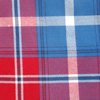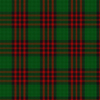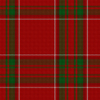Norway’s tartans
Norway enjoys a long tradition of tartan. A tartan ‘mønster’ – not a euphemism for Scotland’s ‘Nessie’ – is a tartan ‘check’ or ‘skotskrutet’. Several Norwegian tartans, both tradtional and contemporary, are registered in the Scottish Register of Tartans, the national repository of tartan designs maintained by the National Archives of Scotland.

The Norwegian Centennial, for instance – which you’ll see graces our website – was commissioned by the Royal Norwegian Consulate General in Edinburgh in 2005 to celebrate 100 years of Norwegian Independence and to foster ever closer links between the people of Norway and Scotland.

Norway’s traditional tartans are most closely associated with the valleys of eastern Norway: Gudbrandsdal, Valdres and Hallingdal, all the way through to Romsdal district in the west. The ‘rondastakk’ widely used in Gudbrandsdalen is a recognized and celebrated element of the ‘bunad’ or national dress of the region and is just one of several designs thought to owe origins to Norway’s one and only skirmish with the Scots – the battle of Kringen 1612.

The origins of the tartans of Valdres and Hallingdal – where tartan is still woven – are shrouded in mystery and perhaps best pondered over a good glass of malt!


With the exception of Norwegian Centennial, all images Crown copyright, courtesy of National Records of Scotland Scottish Register of Tartans .
